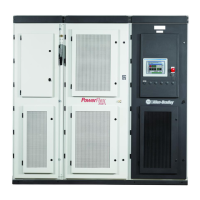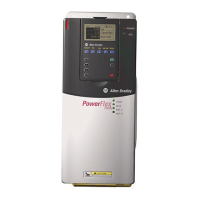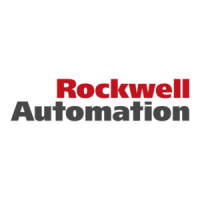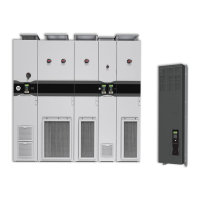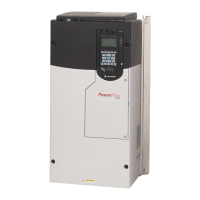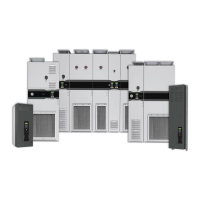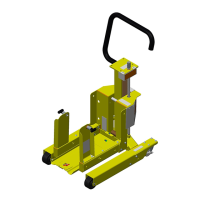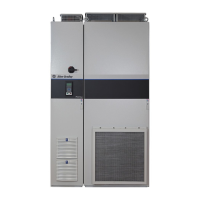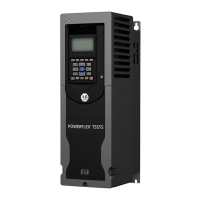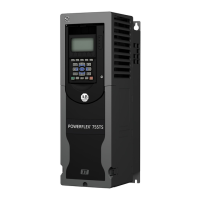126 Rockwell Automation Publication 7000-UM202H-EN-P - November 2023
Chapter 2 Power Component Definition and Maintenance
result in gaps between the impeller and the intake ring resulting in loss
of air flow, or rubbing of the impeller against the inlet ring or motor
assembly during operation.
2. Remove both cap screws from the bushing. The impeller or bushing may
fall as screws are loosened.
3. Thread the cap screws by hand into the two threaded holes in the bushing
flange.
4. Tighten each bolt part of a turn successively, to push the impeller off the
bushing. Screwing down the cap screws into these holes will force the
bushing away from the impeller hub, releasing the compression on the
shaft. Be careful that the impeller does not fall as the clamping force is
released.
5. Pull the bushing off the shaft and remove the impeller. If the assembly
has been in place for some time, it may be necessary to use a wheel puller
to remove the bushing. Do not use a wheel puller on the impeller.
Installing Impeller Assembly onto Motor Shaft
The bushing barrel and the bore of the impeller are tapered which assures
concentric mounting and keeps the impeller running evenly.
The cap screws, when tightened, lock the bushing in the impeller and over the
motor shaft.
The bushing is split down the middle, so that when the locking cap screws
force the bushing into the tapered bore in the impeller assembly, the bushing
will grip the shaft with a positive clamping fit.
The impeller and bushing assembly have keyways that line up with the shaft
and are held in place with compression.
To assemble:
1. The shaft and keyway are clean and smooth. Clean the shaft and bore
with rubbing alcohol or non oily solvent. Check the key size with both the
shaft and bushing keyways.
2. Put the cap screws through the clearance holes in the bushing, and put
the bushing loosely into the impeller, lining up the screws with the
threaded holes on the impeller hub. Do not press, drive, or hammer the
bushing into the bore.
3. Start the cap screws by hand, turning them just enough to engage the
threads. Do not use a wrench at this time. The bushing should be loose
enough in the impeller to move freely.
4. Slide the impeller and bushing assembly onto the motor shaft, ensuring
the same distance from the end of the shaft to the bushing as in step 1 of
impeller removal.
5. Fit the key into keyway. Do not force impeller and bushing onto shaft. If
they do not fit easily, check the shaft, bushing and key sizes.
6. Tighten the cap screws progressively with a wrench. Do this evenly as
though mounting an automobile wheel. Turn one a quarter turn, then
the next a quarter turn, then go back and turn the other a quarter turn
and so on. Torque to 10.2 N•m (7.5 lb•ft).
7. Peen the end of the motor shaft at the keyway with a chisel or center
punch to prevent the key from falling out of position.
ATTENTION: Do not lubricate capscrews, bore, or bushing barrel, as this will
hinder clamping force of the bushing on the shaft and the impeller bore.
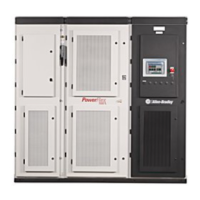
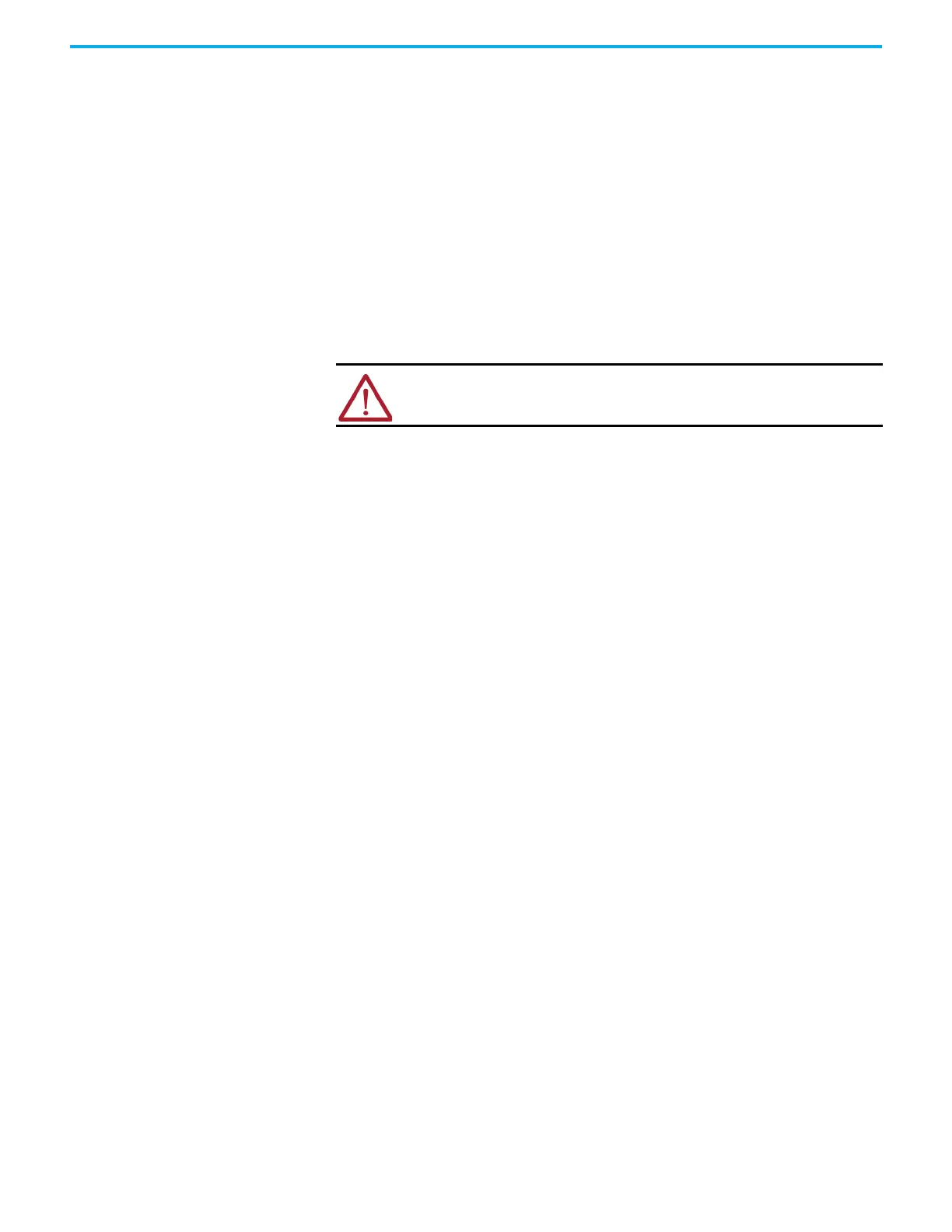